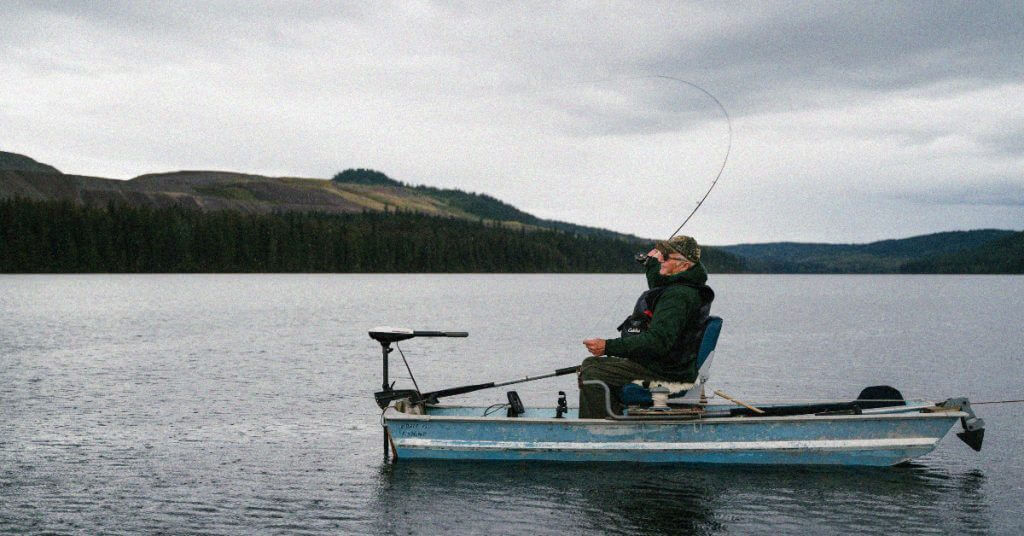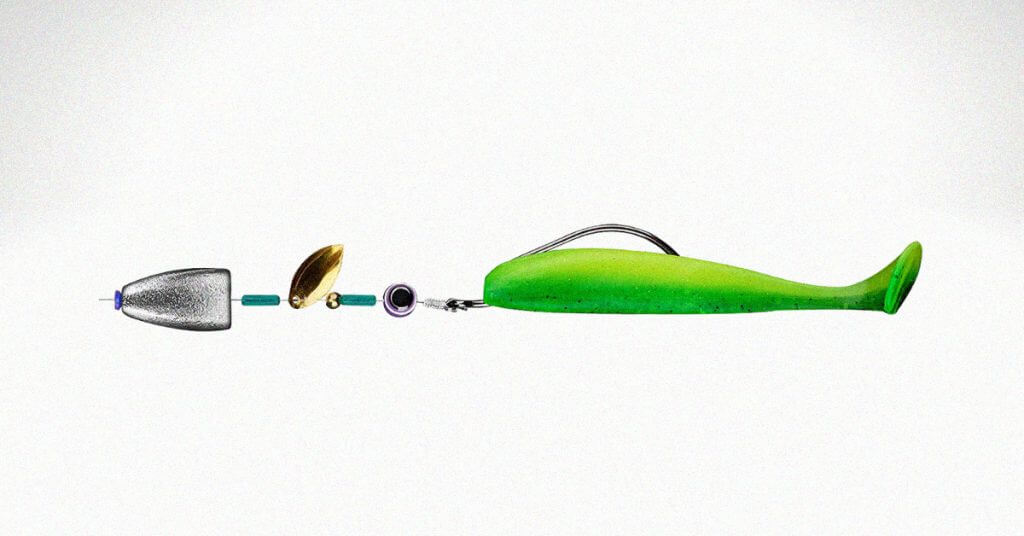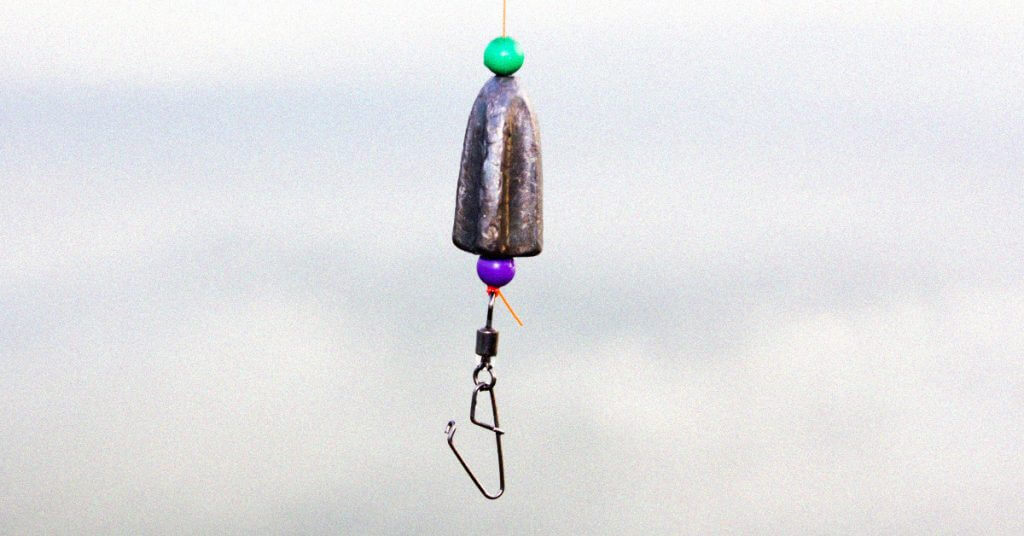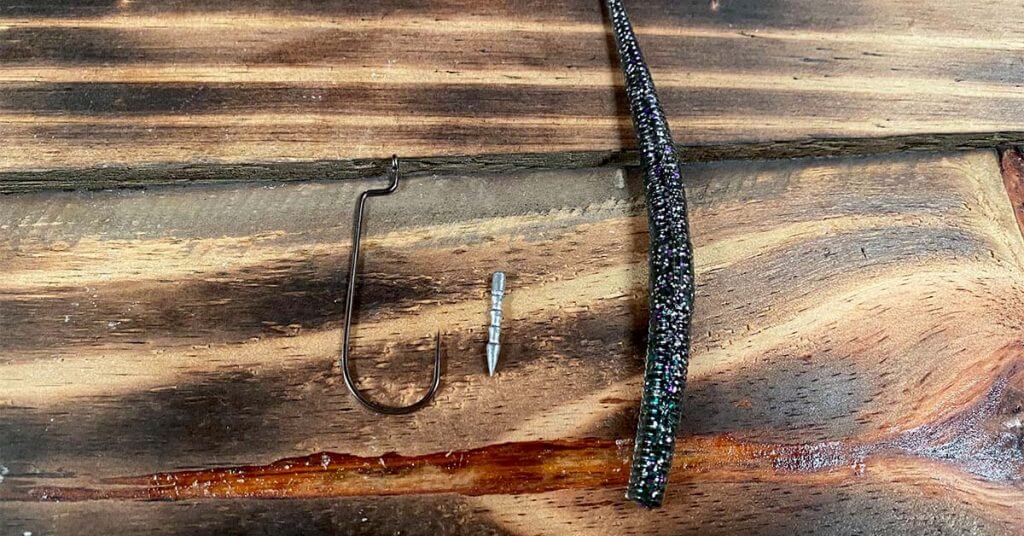The Damiki Rig has a few names, depending on where you live, such as hanging a minnow or moping.
Still, the approach is all the same and is an excellent finesse technique to catch bass on a spinning rod and reel combo during the heat of the summer or cold water months.
As you continue reading, you’ll discover what the Damiki rig is, how to set it up, and how to fish it.
Let’s get you catching more bass when other anglers can’t buy a bite!
If Youtube videos are more your speed, check out this video about the Damiki Rig basics by YourBassGuy.com Community Coordinator Wesley Littlefield.
What is the Damiki Rig?
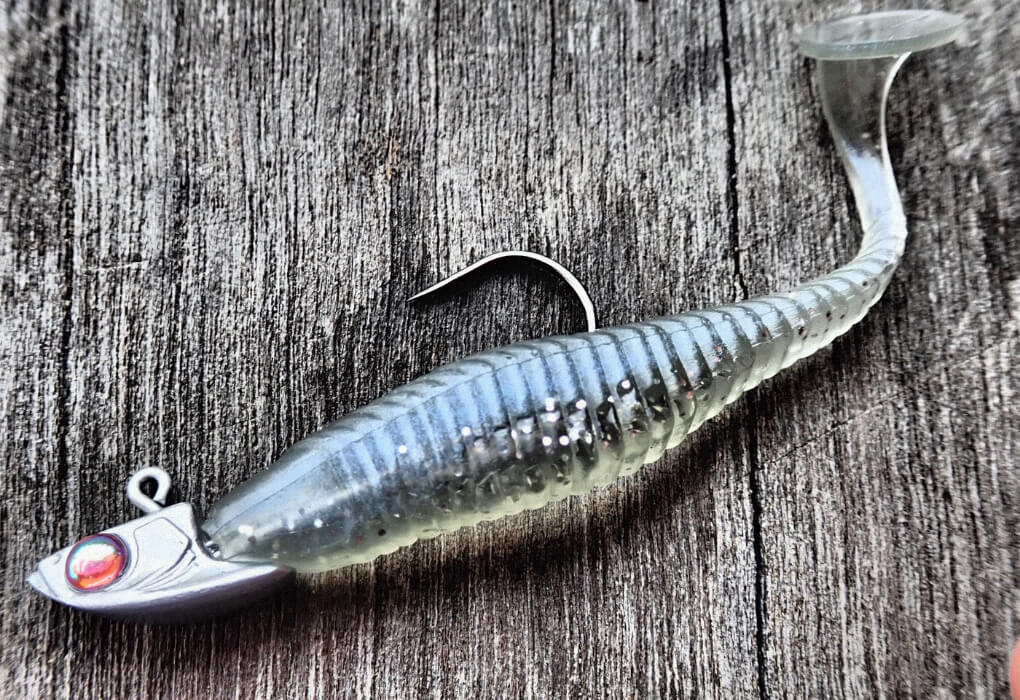
The Damiki Rig is one of many bass fishing rigs that catch various fish species, including largemouth and smallmouth bass. It consists of a soft plastic swimbait and a minnow-like jighead.
I love it because it’s simple to rig and doesn’t require mastering a problematic technique.
In cold water, it imitates a stunned or cold minnow that is between three to four inches long.
Benefits of using a Damiki Rig for Bass Fishing
One of the main benefits of using a Damiki Rig is its simplicity. All you need to do is attach the jig heads to your line, cast it out into the water, and wait for a fish to bite!
- Versatile – they’re perfect for catching fish in fresh and saltwater environments
- Suitable for Beginners – Damiki Rigs are ideal for beginners or those who want an easy way to catch fish without struggling with complicated gear
- Easy to Use – Damiki fishing rigs are very easy to use – all you need is some practice, and you’ll be catching fish in no time!
- Great for Coldwater Bass – Damiki Rigs are particularly suited for catching largemouth bass, spotted bass, and smallmouth bass
So whether you’re an experienced angler looking for another technique to add to the arsenal or a beginner just starting, a Damiki Rig is an ideal choice.
Best Damiki Rig Baits
The Damiki rig is designed to be used with a soft plastic swimbait or fluke. I prefer to match the baitfish of the local area, whether that’s shad, bluegill, or any other small fish that bass love to eat.
Below you’ll find a few soft plastics you can find at Bass Pro, Amazon, and other outdoor retailers.
Damiki Armor Shad
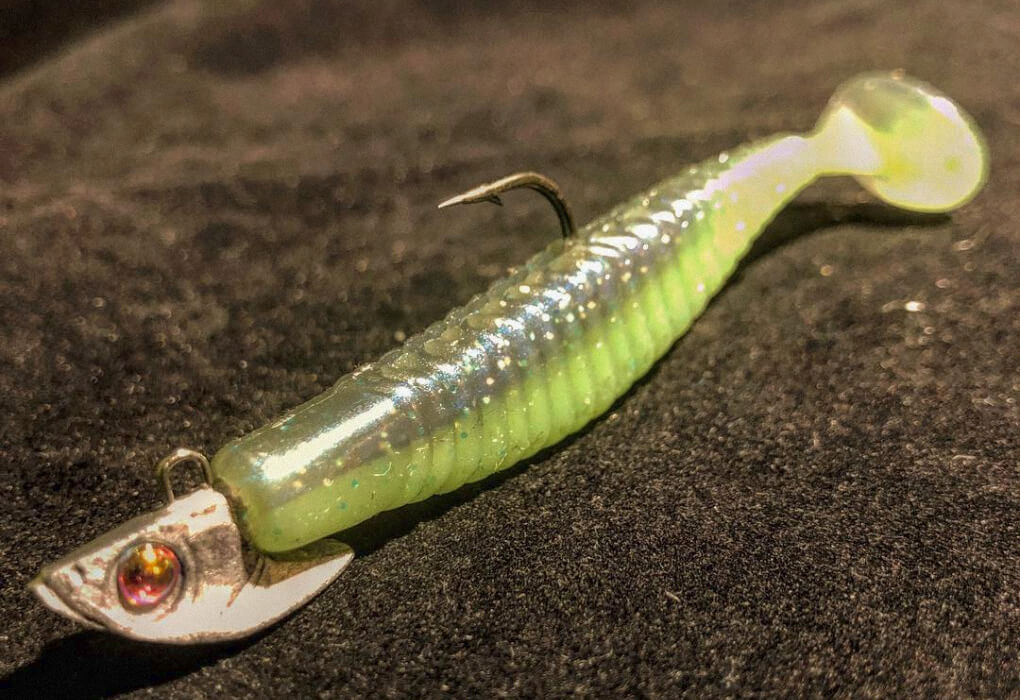
The Damiki Armor shad is what started the Damiki rig craze. So if you’re dedicated to originality, this is the bait for you.
Berkley Powerbait Jerk Shad
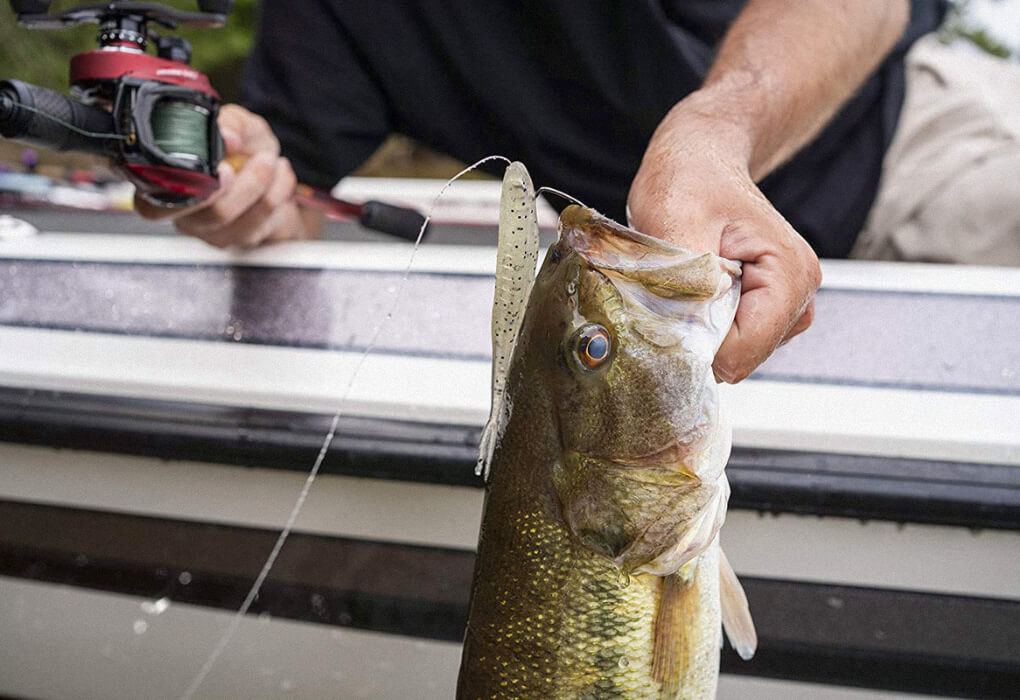
I typically use the Berkley Powerbait Jerk Shad because it’s readily available and inexpensive. It also has a natural movement.
Megabass Spark Shad
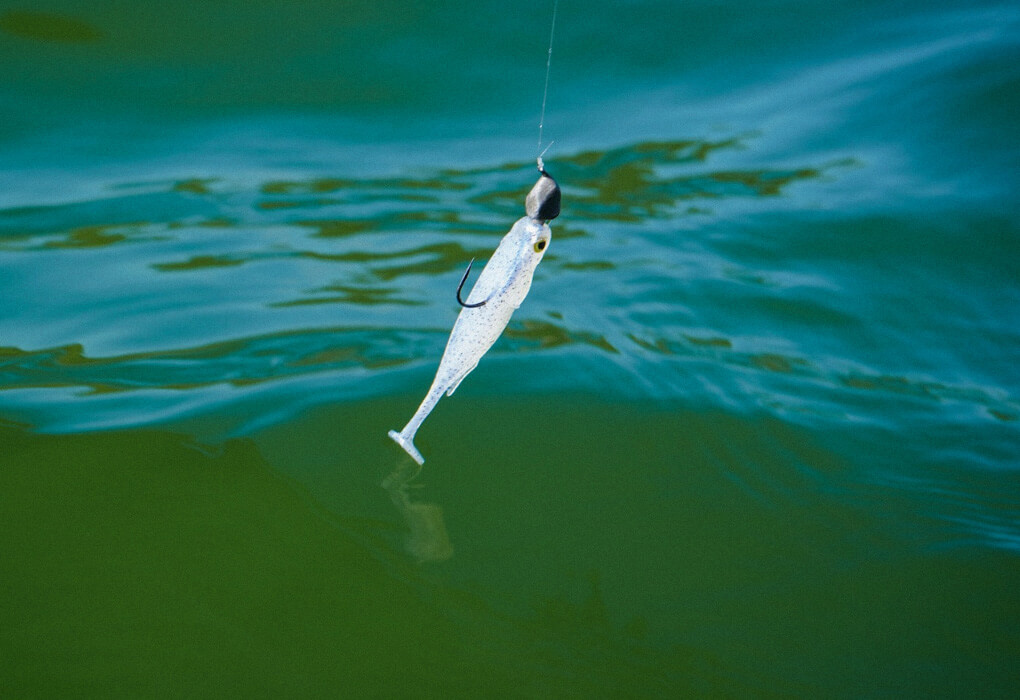
If you’re willing to spend a little more money or use a traditional round-style jig head instead of a Damiki rig jig head, the Megabass Spark Shad has eyes and a paddle tail that offers anglers a slightly different look with which to approach bass.
How To Set Up a Damiki Rig: Step-by-Step
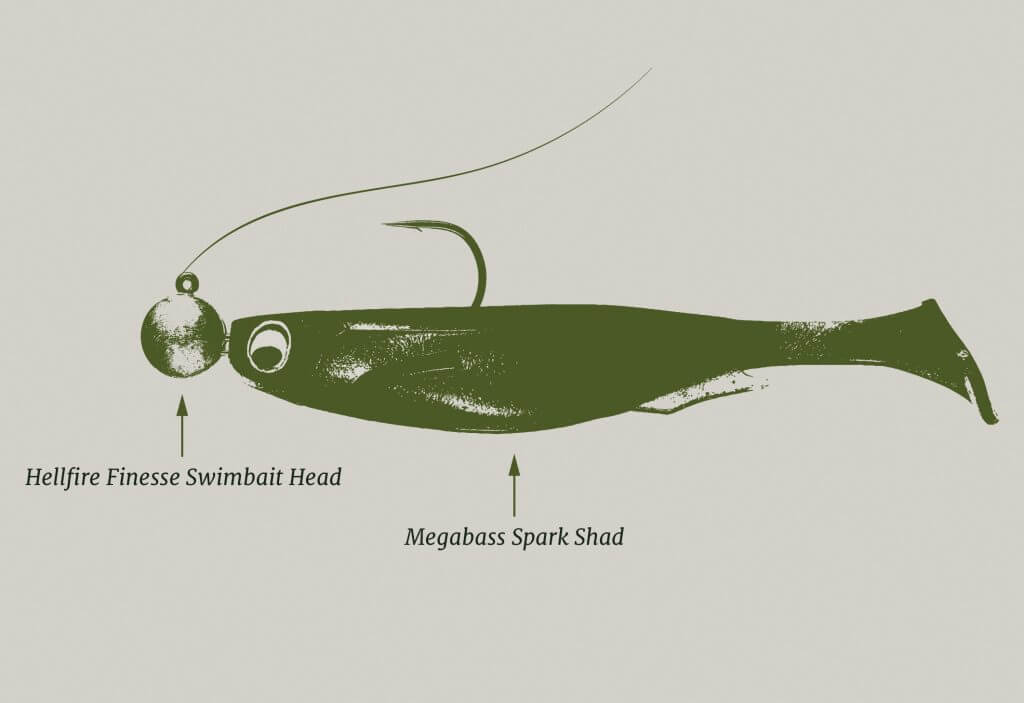
As I mentioned earlier, the Damiki rig is easy to set up.
Step 1: Choose the Correct Weight
I prefer to keep my weight selection simple; if I’m fishing shallow water, I go with a lighter weight; if I’m fishing deeper, I fish with a heavier weight.
Once you’ve chosen the jig, tie it on using your favorite fishing knot.
Step 2: Rigging the Soft Plastic
Pierce the soft plastic swimbait head and push it up the hook about an inch. The exact distance will depend on the hook size you’re using.
Ensure that it is straight; otherwise, it will twist weirdly and have an unnatural action that the fish won’t like.
Step 3: Start Fishing!
You’re now ready to start fishing the Damiki rig!
How To Present a Damiki Rig
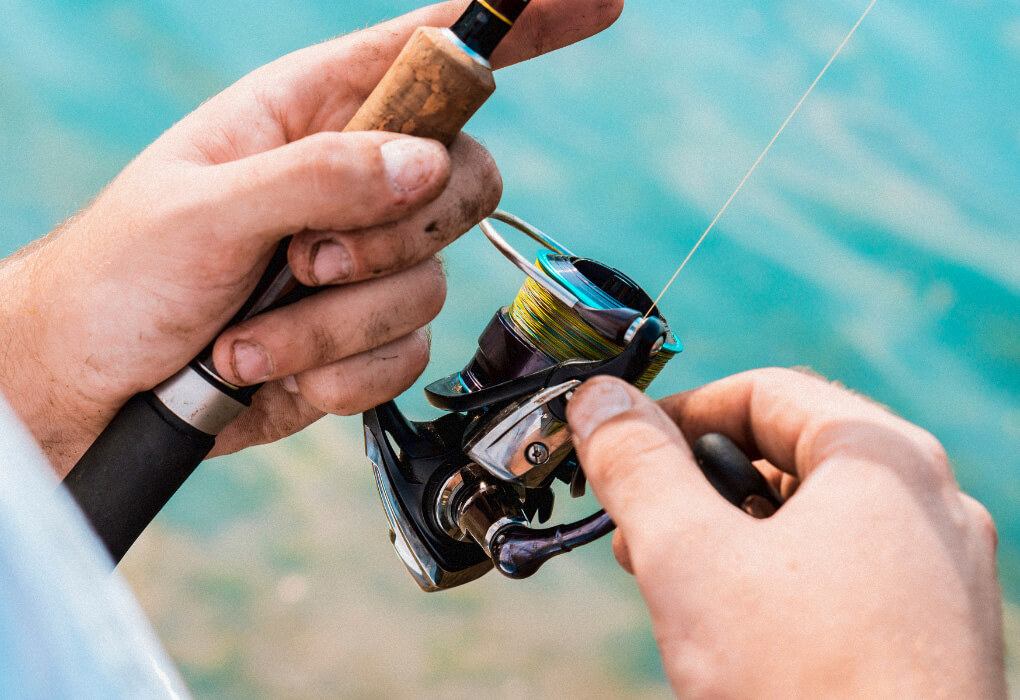
The Damiki Rig presentation is similar to a drop shot, meaning it’s a slow, finesse technique that often requires a spinning reel and sonar to catch fish in deep water.
If you haven’t had any luck with lures like a crankbait, jerkbait, or chatterbait, it’s time to slow down and fish the Damiki rig.
First, you’ll need to find a school of bass. In the extremes, the cold water of winter and the hot water of summer, bass move to deeper water to seek refuge from the elements and find food.
That’s why high-quality sonar on your trolling motor is critical when using the Damiki rig.
Once you’ve found the fish, cast to them, let the jig sink until it’s a few feet above the bass, and slowly reel it in.
Dead-sticking is a method where you have your boat directly over the school, and using live sonar, you drop the rig straight below you and let it sit just above the bass, teasing them.
Light twitches can help entice a bass to bite, as it will look like a dying baitfish, which is an easy meal for any bass.
Final Thoughts
There are some obvious pros to using a Damiki Rig for summer and winter bass fishing, such as its simplicity and ease of use. Though it’s a finesse technique, big bass will still bite it!
Let me know your thoughts on the Damiki rig in the comments!

